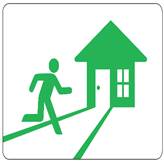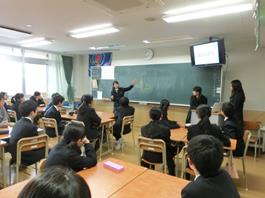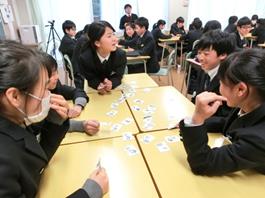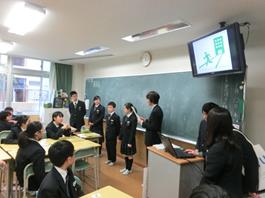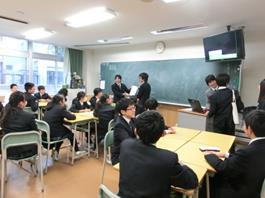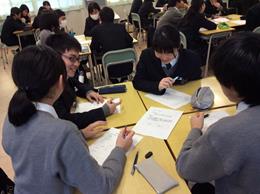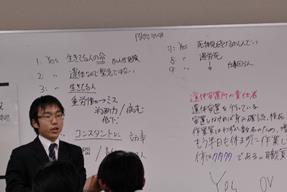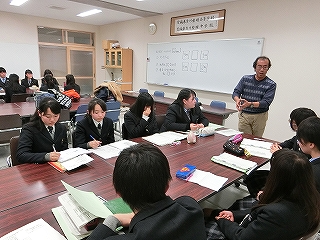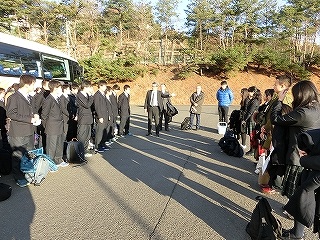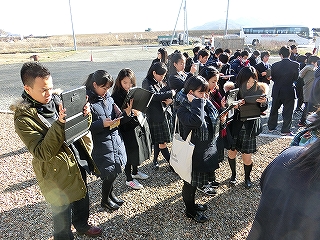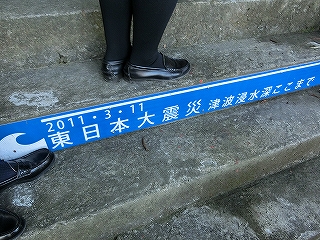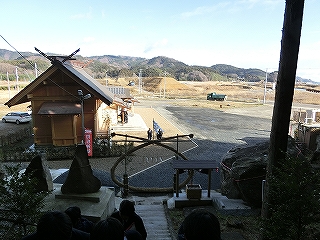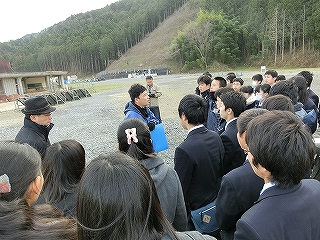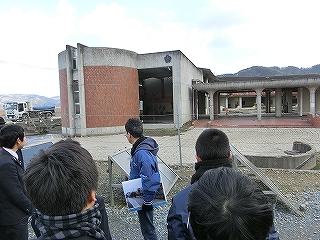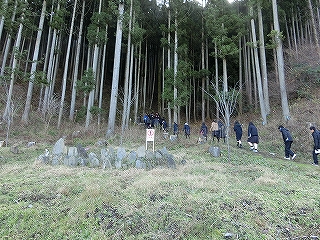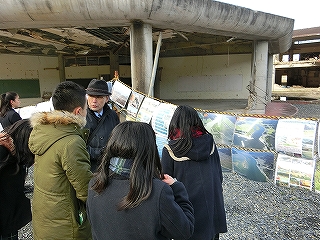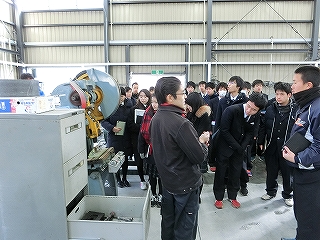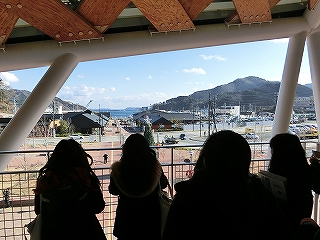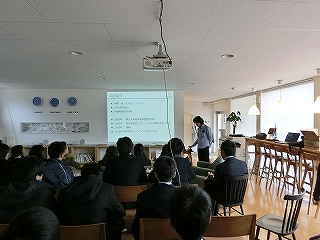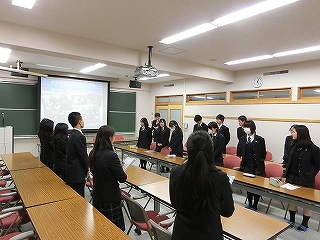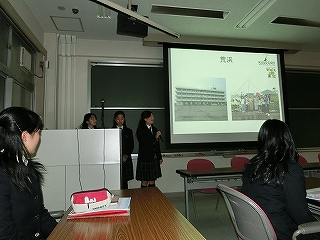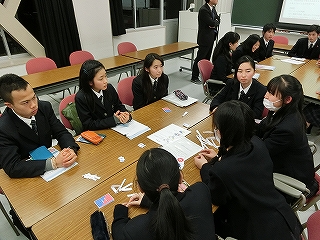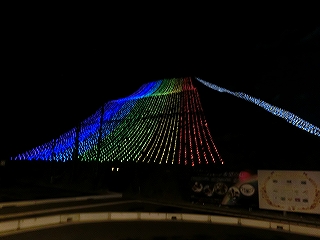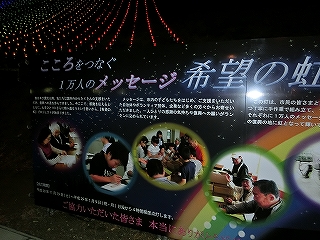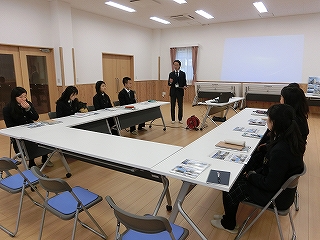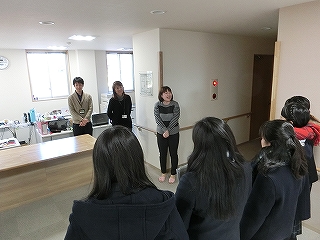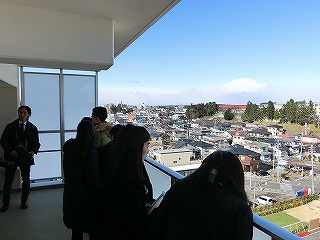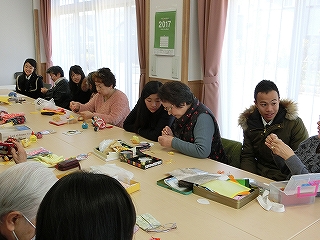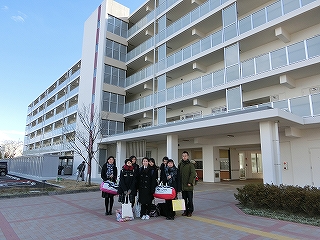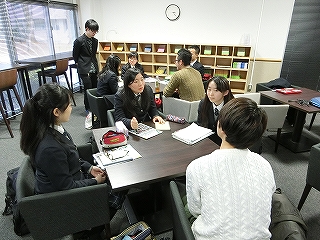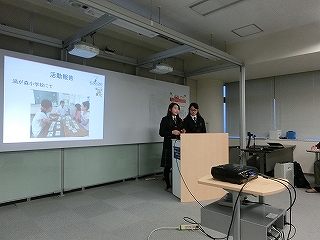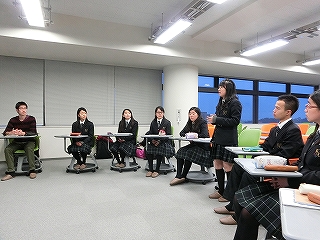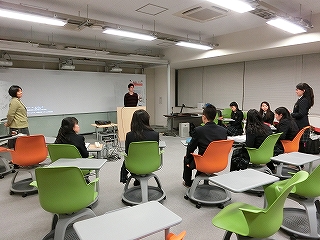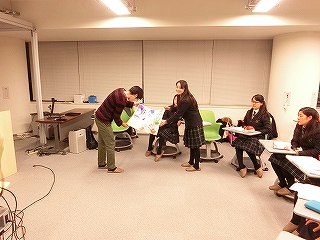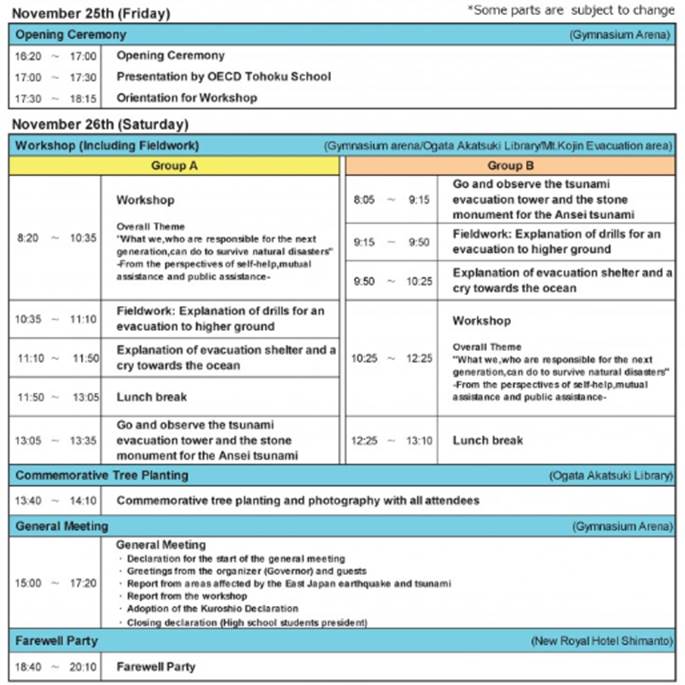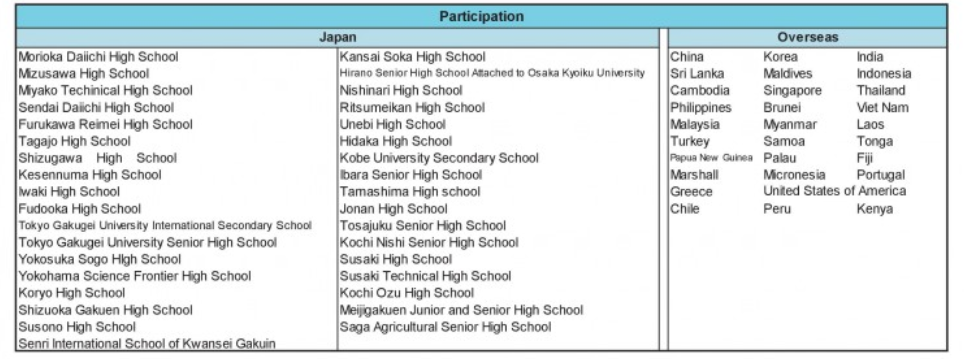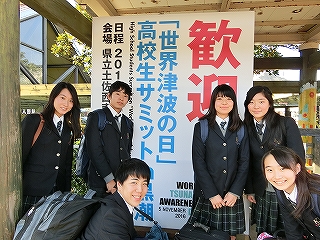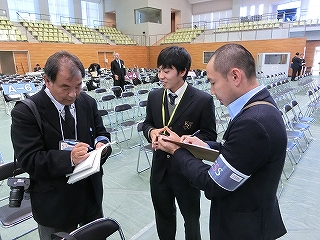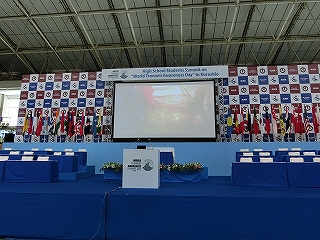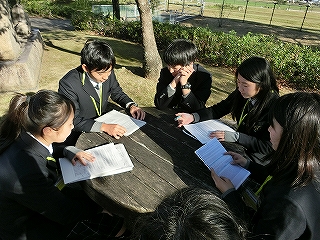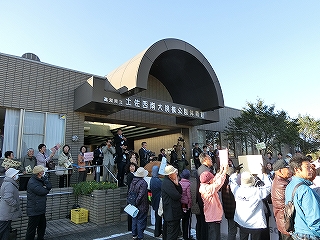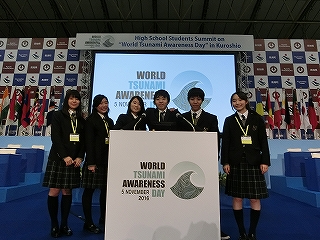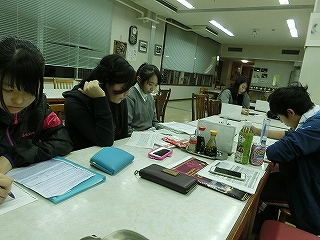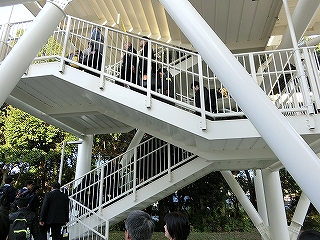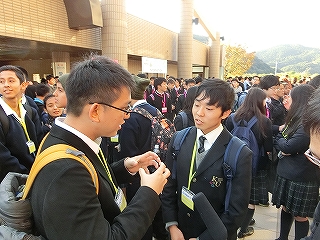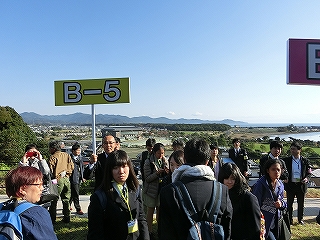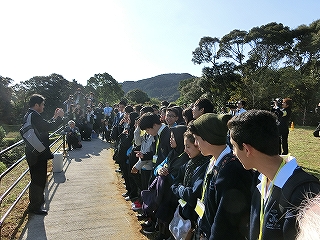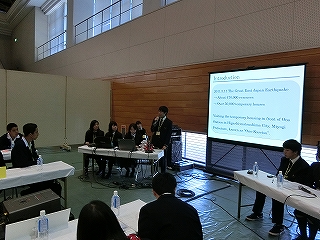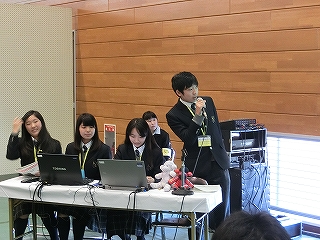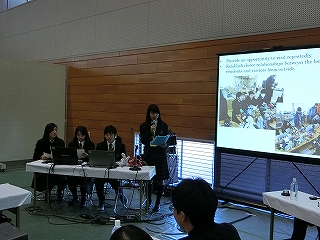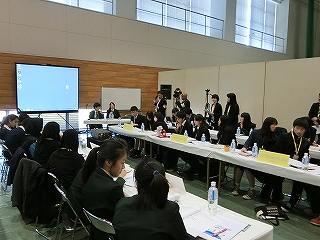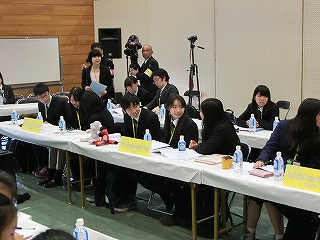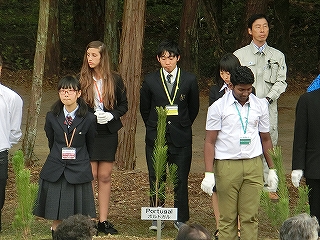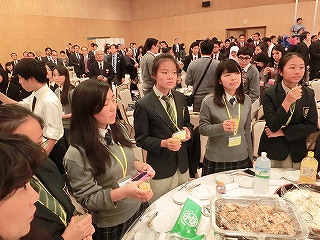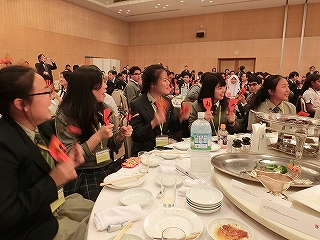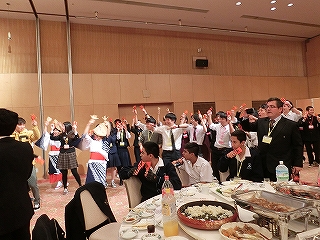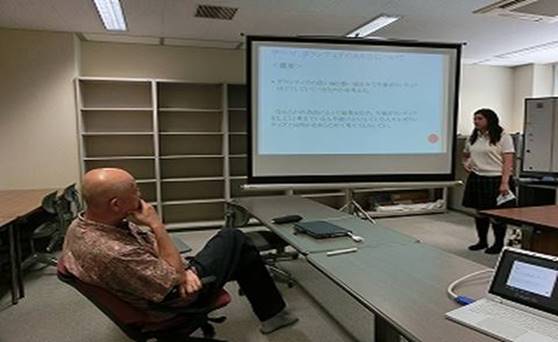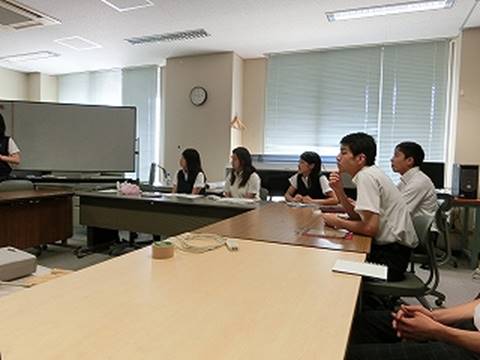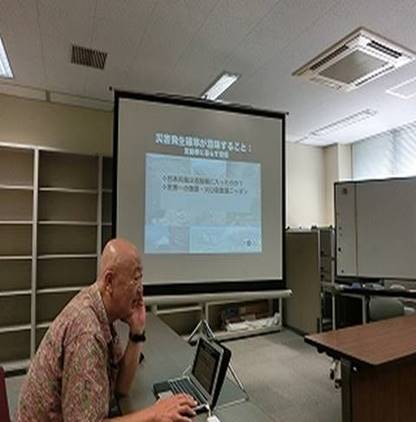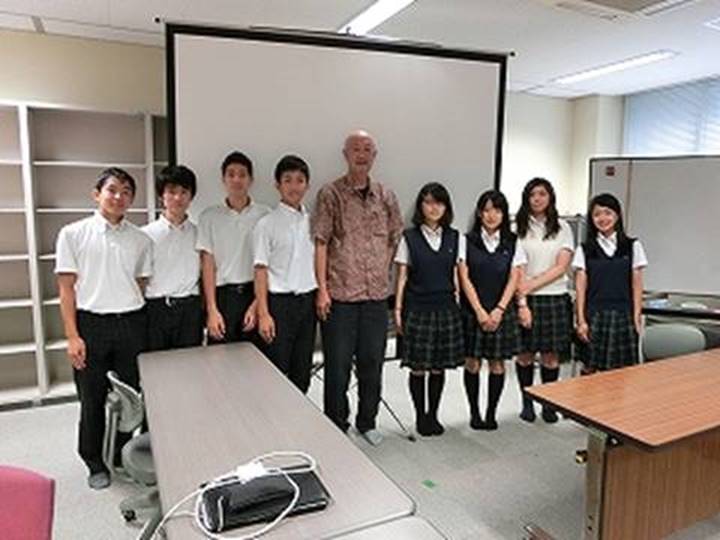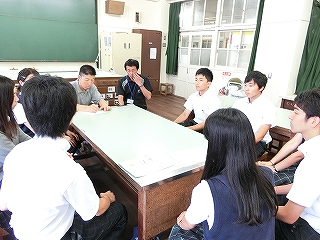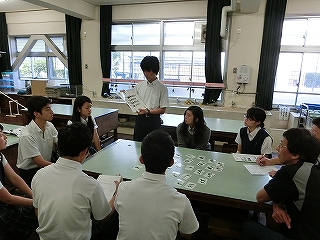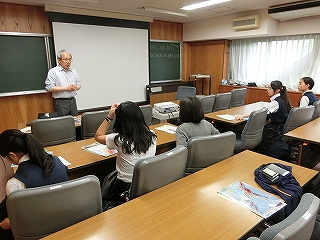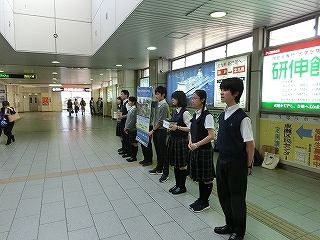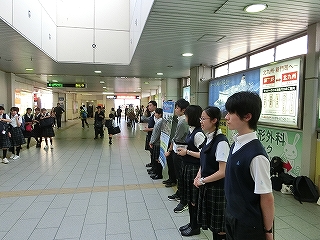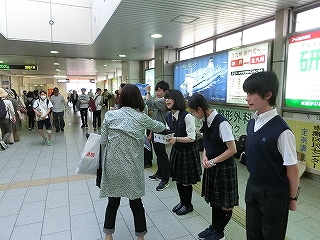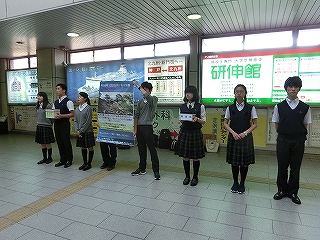|
2017年1月12日(木) |
|||||
|
震災・復興とリスクマネジメント( ○ )国際都市神戸と世界の文化( )提言:国際紛争・対立から平和・協調へ( )グローバルサイエンスと拠点都市神戸( )その他( ) |
|||||
|
[Overview] Disaster Reduction Studies(Jan.12, 2017) 1st and 2nd grade:
Disaster Prevention Studies“Disaster Reduction Action Card Game” [Overview] 1 Purpose Our SGH Sendai Interaction Program members(DR3 Project members)
did a lesson for the other students to make them recognize how harmful a natural disaster can be by… (1)
Reconfirming that Japan is a country which will be influenced by
natural disasters including an earthquakes. (2)
Checking hazard maps to find out if our school may have a landslide
disaster. (3)
By playing the“Disaster
Reduction Action Card Game”(Hisamatsu and others, 2015), make an opportunity
to think what we should do as a first response when a disaster happens.
(1)
Simple
rules (2)
Focus on
“quick thinking” when a disaster occurs, and make players choose the next
action. (3)
By
speaking out the reason for the action, players can share various ideas when
a disaster happens. (4)
People who
played the game can be the host of the next game. (5)
We can
play this game internationally. (6)
We use the
game card as illustrated on the right (7)
This game
will be played in a small group.
(8)
The actual
question we played
2.
Activities |
|||||
|
|
|
|
|||
|
5th
grade students are explaining about the disaster. |
After the
question is asked, players must choose a card within 3 seconds. |
They shared
the reason why they chose their card |
|||
|
|
|
||||
|
We sent a
certificate to the class which has a high concern for disaster reduction. |
|
||||
3 Student’s comments
(Students who played)
・I realized
that disasters have various patterns, so I should be flexible to deal with it.(2nd grade)
・It was
easier to learn through the card game because it was easier to imagine. The
good point of this game is that we can share our thoughts with each other.(2nd grade)
・I learned
how important it is to escape from the danger of the disaster. I would like to
think with my family.(1年生女子)
(Hosts of the game)
・I was very
happy to share what we have learned in the Sendai interaction. All members in
the DR3 project were so happy that we could this game and make our school
students
realize the importance of disaster
prevention. My class enjoyed this game, and they improved their attitude towards
disaster reduction and prevention. I would like to do
these kind of activities continuously to share the importance of
disaster reduction and prevention.
・This was our
first time to do the DR3 project in our school. I was the leader of the
disaster reduction study. Since we had to operate 7 classes at one time, we
were so busy. I learned
how important it is to prepare in advance.
The “Disaster
Reduction Action Card Game”is used in the DR3 activities. It was a good
opportunity to share this game within our school.
・ Last summer, we played the“Disaster
Reduction Action Card Game” at Uzugamori Elementary School. This time we played
the game with our students aged from 12 to 14. Since the age was higher this
time, each students had a more deeper imagination, so their comments were very
impressive. I would like to share and learn through this activity continuously.
|
3rd -5th grade Disaster Prevention Studies
“Cross road” [Overview] 1 Purpose We did an interview with Kobe City office staffs (6,098 people)
who were working when the“Hanshin Awaji Great Earthquake” happened. At that
time, city staff had to work for 24 hours in a very critical situation. The
situation was difficult for several months. This study is to understand the actual
situation when a disaster happens. Students should think about the issues are
the problem of themselves and share what they thought about it with other
students. Students will improve their understanding of disaster prevention.
When people have to deal with the disaster, they will face many troubles and
also will have to find a way out of a dilemma. All staff of Kobe City council
had to find a way to solve the critical situation. This study is to learn
from their experience and find other ideas from a different situations. 2 Activity report (1)There are 9 questions in the original game,
but it is very difficult. We modified the question to 3 and made each grade
to choose. 「A」Easy:Able to change afterwards →「C」Critical:Issue will impact human life and rights 〈Example: Kobe City Question1008〉「A」
The problem
of saying “YES”→The
difficulty and unfairness of choosing 1000 refugees who cannot receive the
meal. The problem
of saying “NO”→Refugees
will surely claim, and also the autonomy will claim too. 〈Example: Kobe City Question1016〉「C」
The problem
of saying “YES”→The delay
will cause the bodies to lie in state, the bodies will be damaged, families
of the victims will be upset. The problem
of saying “NO”→Mental and
Health problems for the workers, working efficiency will be low. (2)Discuss and decide in small groups and in
the class First, divide into small groups and have a
discussion. Then each group will do a presentation of their conclusion, and
discuss again in class. One answer will be chosen as a class. |
|
|
|
|
|
|
|
|
3 Student’s comments
・I am not
sure if my answer was correct for each question. If my position and situations
were different, I am sure that I will choose other answers. It was so hard for
me to decide the answer when I tried to think and stay objective in a disaster.(3rd)
・The question
about the press report was really difficult. I know that people will make claim
about news reports nowadays. I realized that the ones experiencing the disaster
should move closer to each other. I believe that we should talk to each other
or discuss with each other more often.(3rd)
・ I believe that people who experienced the
earthquake disaster should do volunteer work because people who experienced it
have more knowledge than others. I hope that those people can share their experience
in some way.(4th)
・I felt
scared because if someone misunderstands and makes a wrong decision, the damage
may increase and it will never recover. To make the best decision, people
should learn from past mistakes.(4th)
・ In my group, each of us had different answers
to the question. I learned that we should see things from many ways and decide
in a calm way. I also learned the importance of the time of making the decision
and taking action and not only choosing“Yes or No”.(5th)
・ I learned that imagining the impact of the
disaster will help you prepare and also get your heart ready for the disaster.
I think that things will be better if you imagine it and be ready for it.(5th)
・It was a
pressure for me because even if I think and decide, there would be a problem. I
don’t want to experience this, but I am sure that in the future, I will have to
face the natural disaster.(5th)
2016年12月14日(水)~12月16日(金)
震災・復興とリスクマネジメント( ○ )国際都市神戸と世界の文化( )提言:国際紛争・対立から平和・協調へ( )グローバルサイエンスと拠点都市神戸( )その他( )
2nd Sendai Interaction Program
[Overview]
1 Theme
Kobe University Secondary School SGH「Earthquake
Disaster Reconstruction and Risk Management」
Disaster・Reconstruction・Reduction・Resilience(DR3)is the theme
for the Sendai Interaction Program (DR3).
2 Purpose
Kobe and Sendai students will interact to share
ideas as to how we should deal with an earthquake disaster. Since both areas
are disaster areas, we would be able to learn deeply and think about risk
management. Details are as below.
(1) Think together
and learn about the disaster that happened in your area/think about the
disaster which may happen in the future.
(2) Visit disaster
remains, listen to the stories of the victims of the disaster and think about
what we should share to future generations.
(3) Do a drilling
investigation to learn and understand the earthquake from the point of view
of natural science.
(4) Through the
above activities, we aim to foster students who can think and care about
other people.
3 Schedule
|
Dec. 14 |
|
|
|
|
6:10 |
Meet at
Kansai International Airport |
|
|
7:10 8:25 10:00-12:00 |
Departure:
Kansai International Airport Flight: MM131 Arrival: Sendai Airport Sendai
Airport Station-> Sendai Station Sendai
Station→ Sendai Shirayuri Station Activities
at Sendai Shirayuri Station |
|
|
14:00-17:30 |
Interaction
with Sendai Reimei Junior and Senior High School (SSH) |
|
Dec. 15 |
8:00 |
Tagajo
High School |
|
Fieldwork
with Tagajo High
School |
9:30 11:00 13:00 16:30 16:30-18:30 |
Visit
Minamisanriku, Ishinomaki-view how to manufacture Ogatsusuzuri Ookawa
Elementary School Fieldwork
in Onagawa-cho Tagajo
High School Discussion
and interaction JR
Nobiru station, visit the illumination event “Hope of the Rainbow” Visit
the disaster ruins of Nobiru station |
|
Dec. 16 |
|
|
|
9:30 14:30-15:30 16:00-17:30 18:30 |
Visit
disaster restoration housing at Tsurugaya area. Interaction
with Tohoku University, SCRUM Interaction
with Tohoku University Division for Leading Graduate School Program Sendai Airport |
|
|
|
20:10 |
Departure:
Sendai Airport Flight: MM140 |
|
|
21:50 |
Arrival:
Kansai International Airport |
4 Activities
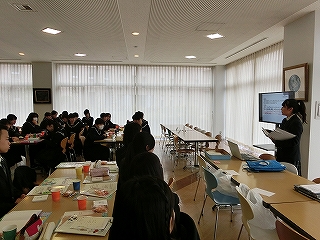
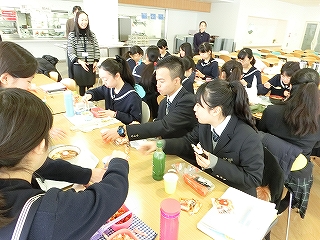
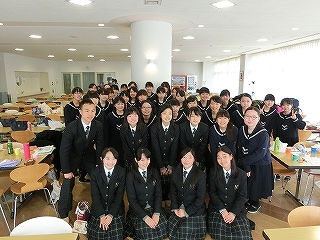
SGH-Sendai Shiraishi Gakuen・Presentation
We had lunch meeting with students in
Sendai Shiraishi Gakuen
Snapshot with Sendai Shiraishi Gakuen
Students
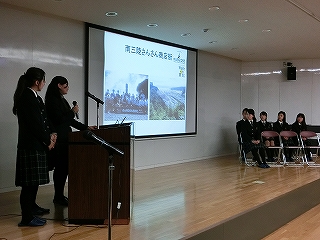
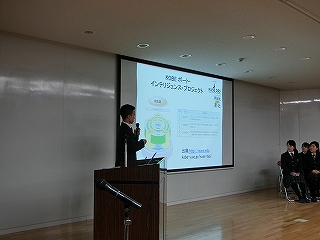
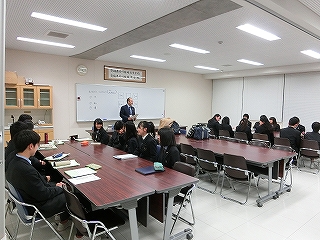
Presentation at SSH-Furukawa Reimei High
School
Our 5th grade student is doing
a presentation of his research
Interaction with Furukawa Reimei High
School students
